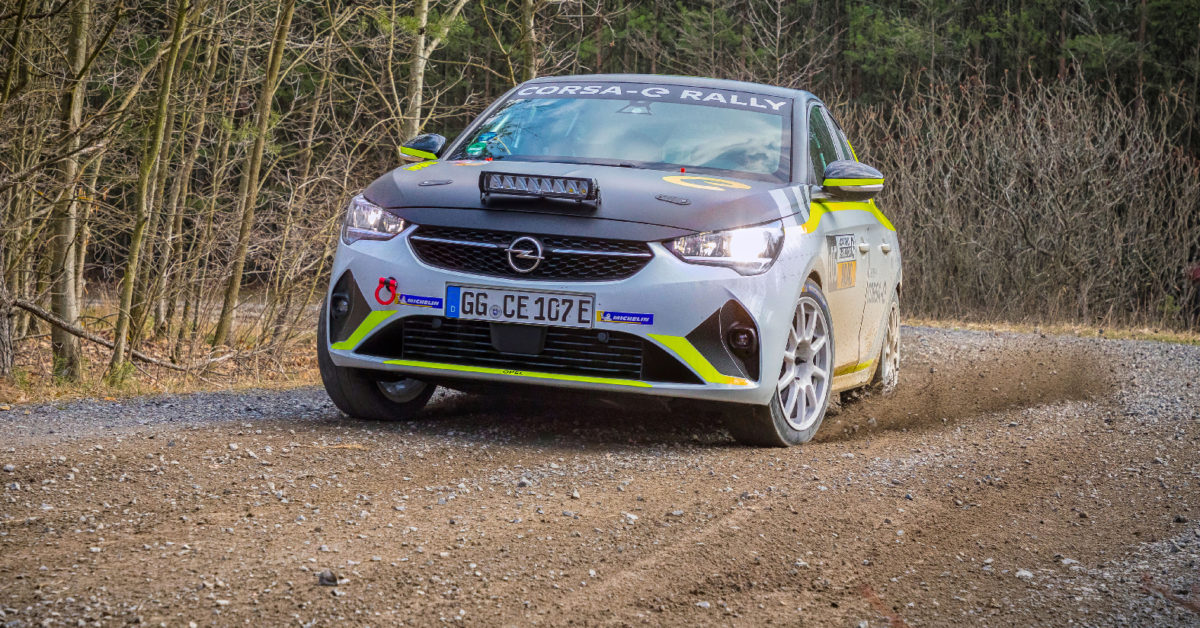There can be no doubt by now that electric racing vehicles are high performance machines and dynamically fascinating. However, electric vehicles are also quiet by nature. What is a blessing for normal road traffic and residents is suboptimal for motorsport in general and rallying in particular.
Firstly, because sound is part and parcel of racing. Secondly – and in this case even more crucial – in a rally it is imperative that spectators and sports officials not only see an approaching competition vehicle, but also hear it as early as possible. The German motor sport federation DMSB sets very clear guidelines here. “So it was clear to us: the Opel Corsa-e Rally not only needs performance, but also sound. For safety reasons, but also to make it even more captivating,” explains Opel Motorsport Director Jörg Schrott.
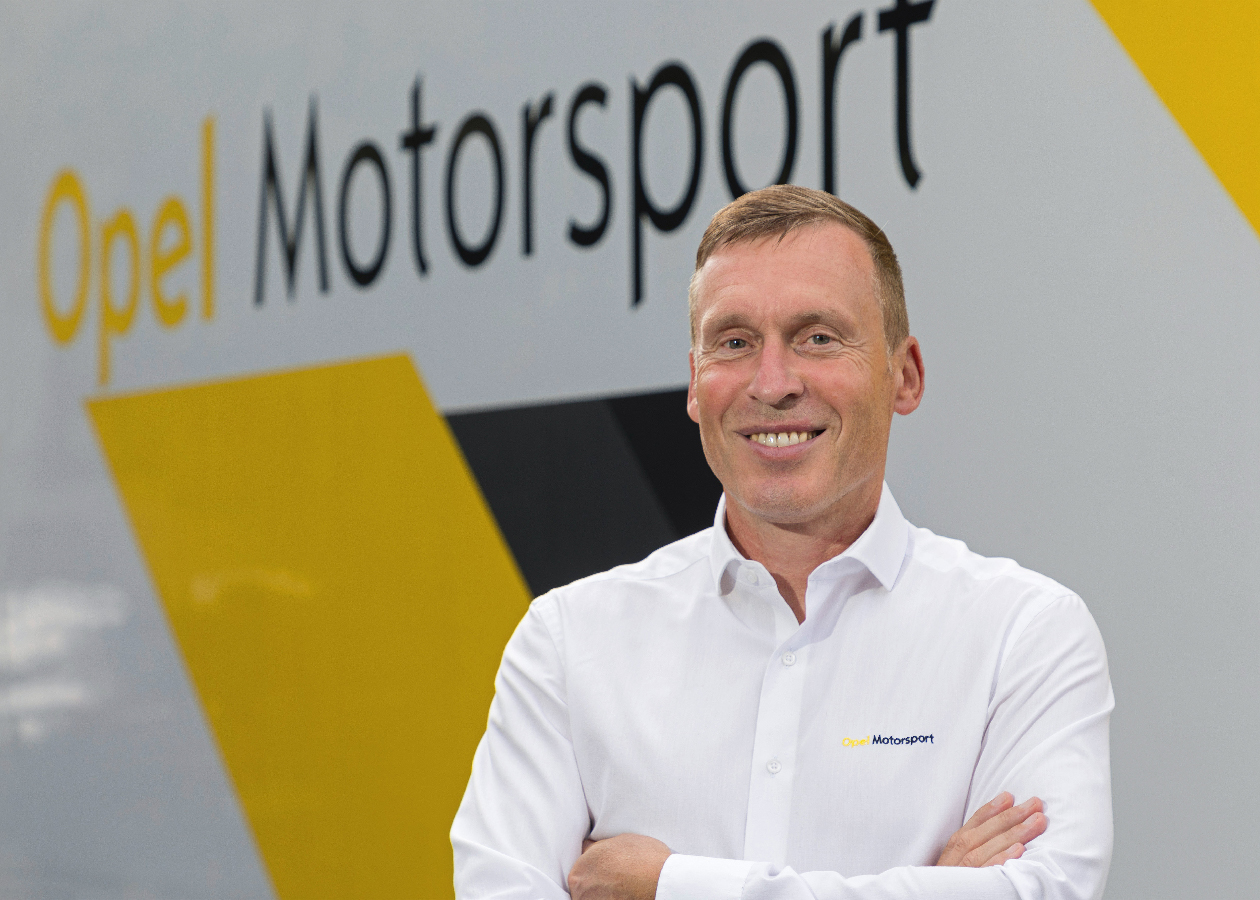
“For us it was clear: the Opel Corsa-e Rally not only needs performance, but also sound. For safety reasons, but also to make it even more captivating.”
Opel Motorsport Director Jörg Schrott
The challenge: highly demanding trailblazing work
What sounds so simple turned into a real challenge in the months that followed. Empirical values? Negative, because no one had ever taken on an electric rally one-make cup before. That the ADAC Opel e-Rally Cup is a real pioneering achievement was apparent time and again during development work. Which made it incredibly exciting, but also extremely demanding.
Back to the sound system. First there was the question of the hardware. An amplifier? Okay, no problem. But then came the loudspeakers. Commercially available loudspeakers are designed for interior use and usually only get wet in the event of a particularly wild party. But a rally means sometimes driving through a puddle or over a wet road, so something more robust was needed.
Audio sample: This is how the Corsa-e Rally sounds
Step 1: hardware
from the maritime world
The Opel Motorsport development team found what they were looking for in marine accessories. Four splash-proof 400-watt loudspeakers, normally used on larger boats, were mounted on all four corners of the Corsa-e Rally; this called for the design of special brackets.
And where should the brackets be mounted? Preferably in prominent and exposed spots to enable the unobstructed transmission of sound. But this would come with the risk of the speakers breaking off at the slightest contact, which is not a seldom occurrence during a race. So they had to be placed behind the – unfortunately also noise-absorbing – fairing.
In the case of the rear of the vehicle, this was no big deal. A deflection shaft directs the sound downwards by about 45 degrees to the side and to the rear. However, this was not possible at the front because the shafts would have been so low that they would have broken off when the vehicle is set down hard, for example after a jump or in the event of a cut. So at the front, the speakers – which bear a striking resemblance to a thermos flask – emit sound downwards. As this proved to be completely sufficient in practical tests, the hardware issue was solved.
Safely housed: At the front, the speakers emit sound downwards.
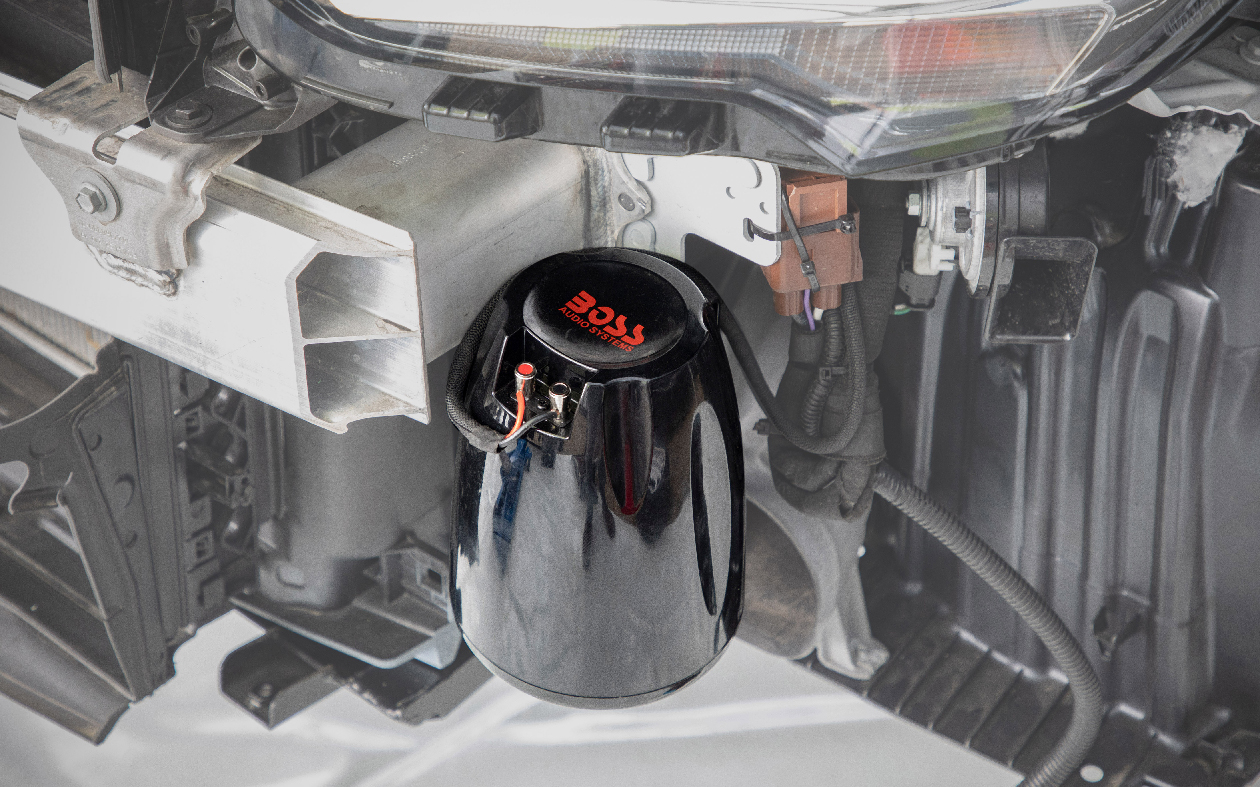
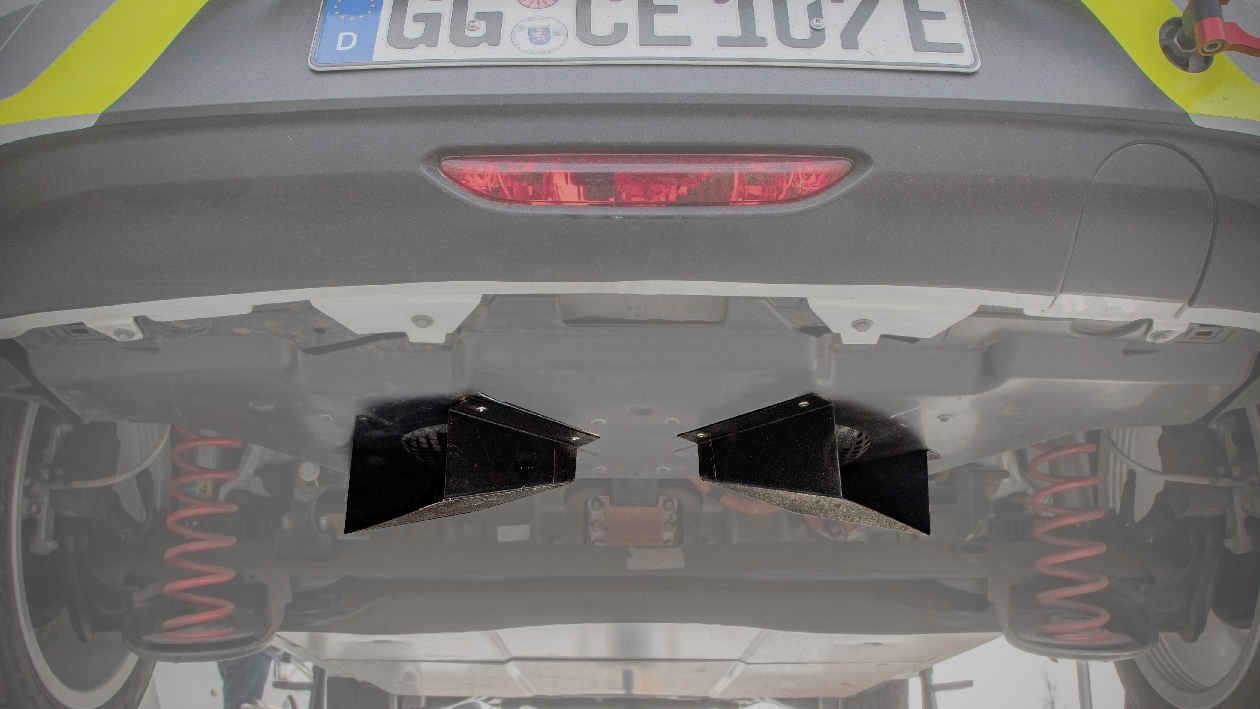
At the rear: one deflection shaft directs the sound from each loudspeaker downwards by about 45 degrees to the side and to the rear.
Step 2: audio software
coupled to the rpm
Now it got really tricky. On the one hand, a suitable sound had to be created, which is no longer a problem with modern audio software. But it also had to be ensured that the sound system and the vehicle communicate with each other, i.e. that the sound dynamically reflects the driving state of the Corsa-e Rally. This is managed by a separate control unit that works with the data it receives from the vehicle.
In a trial-and-error process, the most suitable principle for this purpose was worked out in cooperation with the French company “Sound To Side”. This is based on a “stationary sound”, known as “idle sound” in technical terminology, which is coupled to the speed of the electric motor, making it possible, for example, to hear spinning front wheels (which even a Torsen limited slip differential cannot always prevent).
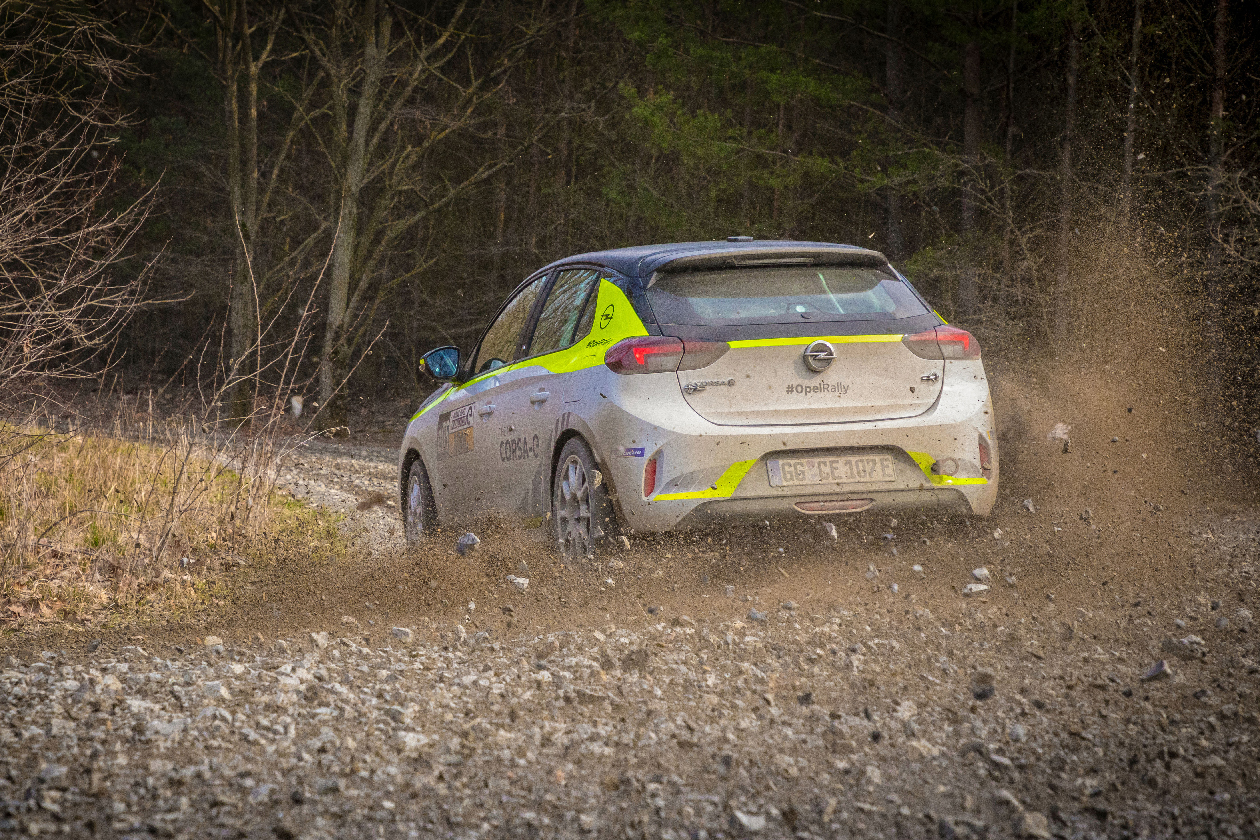
First “live” test: The season opener of the ADAC Opel e-Rally Cup will take place on June 11 and 12 at the ADAC Rally Stemweder Berg.
Step 3: Sound testers help
with practical tests
With this, the foundation was laid, and it was only a matter of mixing the right sound. This work had to be verified again and again in practical tests, because it makes a difference whether a sound is produced by a computer or by a moving rally car. And it could be a bit spacy because we are not talking about a conventional rally car, but about one that has never existed in this form before.Damit war der Grundstein gelegt, und es ging nur noch darum, den richtigen Sound zu mixen. Eine Arbeit, die immer wieder im Praxisversuch verifiziert werden musste, weil es eben doch einen Unterschied macht, ob ein Geräusch von einem Computer oder von einem fahrenden Rallyeauto erzeugt wird. Und ein bisschen spacig durfte er durchaus sein, es geht ja nun einmal nicht um ein konventionelles Rallyeauto, sondern um eines, das es so noch nie gab.
To avoid the danger of operational blindness, the developers enlisted various people, including unsuspecting passers-by, as sound testers during their test drives – which often took place on the factory premises in Rüsselsheim. The motto was: “A rally car is about to pass. Listen to it. And, how does it sound? So you like it, do you? Thank you and have a nice day…“
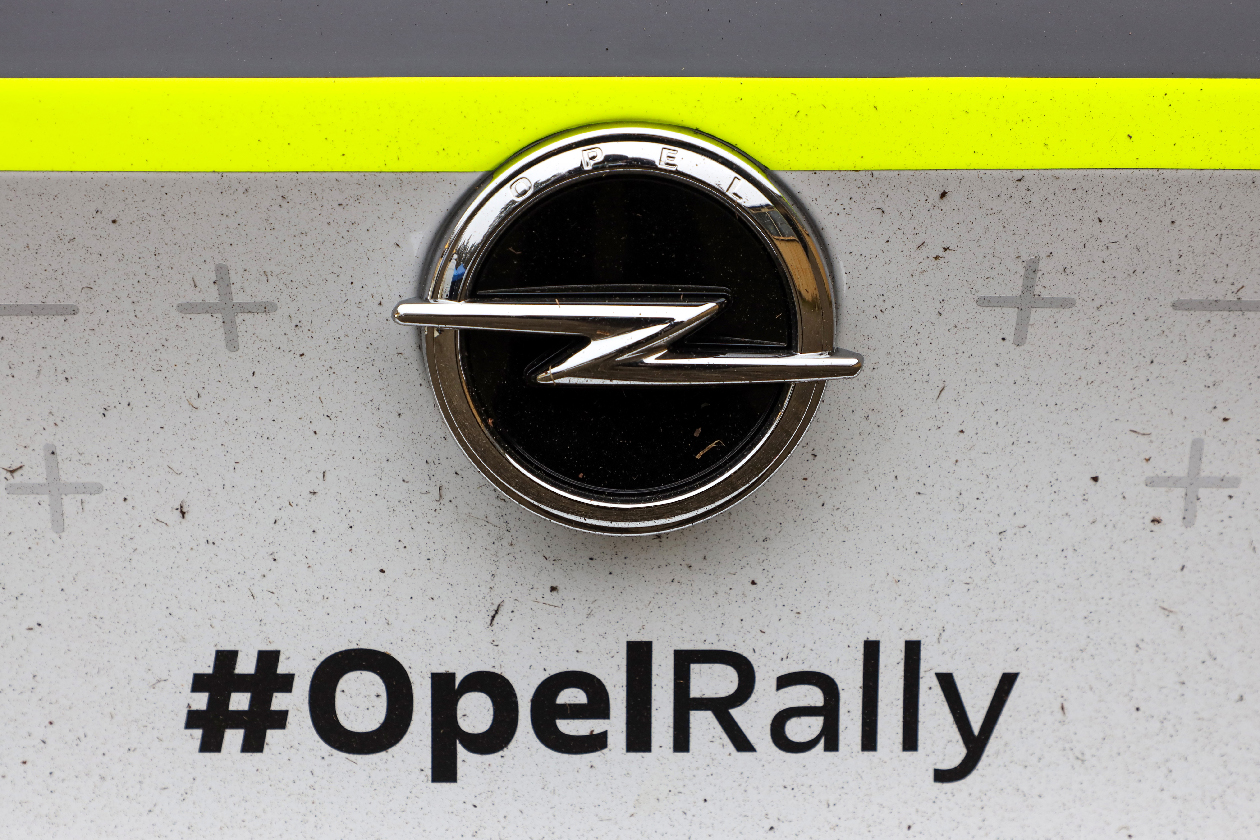
“We wanted to find a sound that met our requirements in terms of safety, but that also reflected the innovative project.”
The result: a sound that attracts attention
“We didn’t want to simply simulate the sound of a combustion engine, which of course would have been possible without any problems,” says Jörg Schrott. “We wanted to find a sound that met our requirements in terms of safety, but that also reflected the innovative project. I think the sound of the Corsa-e Rally will attract attention on the special stages.”„Wir wollten nicht einfach einen Verbrenner simulieren, was natürlich problemlos möglich gewesen wäre“, sagt Jörg Schrott. „Es ging uns darum, einen Sound zu finden, der zum einen unsere Anforderungen in Bezug auf die Sicherheit erfüllt, der aber auch das innovative Projekt abbildet. Ich denke, der Sound des Corsa-e Rally wird an den Wertungsprüfungen Aufmerksamkeit erregen.“
By the way, earlier we mentioned residents being spared in terms of noise pollution: the sound system of the Corsa-e Rally has two power levels. When driving on public roads between competitive stages, a quiet mode is used. It’s only on the special stages that things really pick up – in terms of speed and sound.
April 2021
